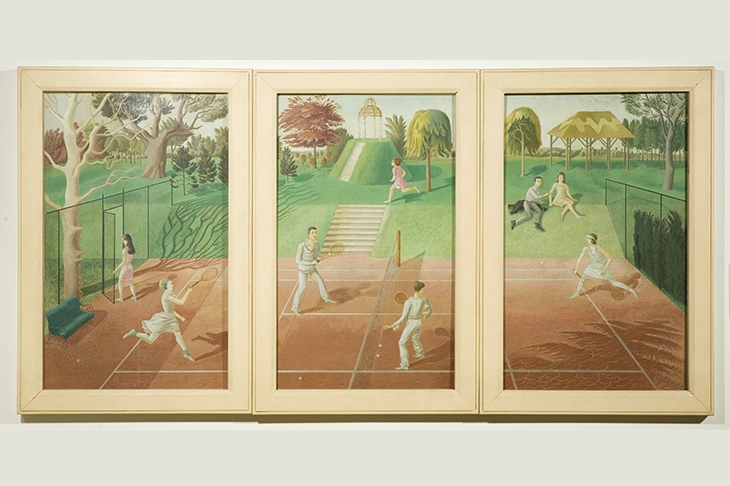Tennis is best played with a wooden racket on a shady lawn somewhere close to Dorking. There is no need for trainers, an umpire, or a scoreboard. No need for rules at all. After Wimbledon, the tea-and-jam, grass-stained, Sunday-afternoon scenario from A Room with a View is the only one to emulate.
In 1908, when E.M. Forster published his novel, lawn tennis was not yet 50 years old. Although the origins of the game reach back to the 12th century, the version played by Miss Honeychurch and Reverend Beebe and most of us today was said to have been pioneered on a croquet lawn in Edgbaston in 1859. It was patented 15 years later by Major Walter Clopton Wingfield, a Welshman, originally under the not-so-catchy name of ‘sphairistike’ (from the ancient Greek for a skilled ball-player).
Distinct from the handball of medieval times and the ‘real tennis’ enjoyed by Henry VIII, the modern game appealed to both men and women. The romance of dainty-waisted ladies squaring up to men in tennis whites was not lost on the Victorian and Edwardian painters, whose fascination with the subject has been revived repeatedly throughout the past century and a half.
Whether she is drowning in fabric or sporting a skimpy dress, a female tennis player always cuts a seductive figure. In 1885, the Irish portraitist Sir John Lavery painted ‘The Tennis Party’, featuring a vigorous match of mixed doubles on an elegant gated lawn. One of the women goes for the ball, gently gathering her skirts and bending against the curve of her corset as she does so. You can well believe she is wearing more than four kilograms of material — the typical weight of 19th-century women’s tennis clothes. For all their coverings, Lavery’s women are astonishingly sexy.








Comments
Join the debate for just £1 a month
Be part of the conversation with other Spectator readers by getting your first three months for £3.
UNLOCK ACCESS Just £1 a monthAlready a subscriber? Log in